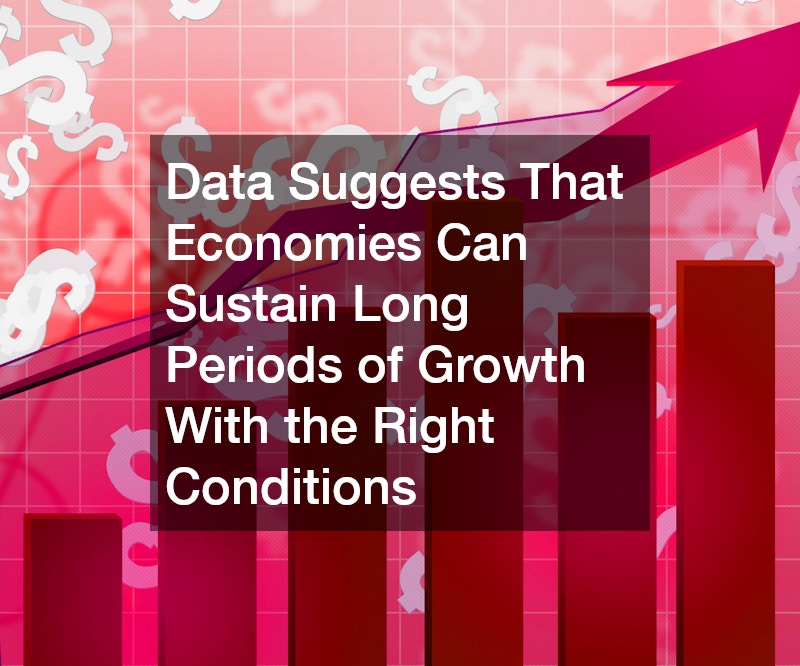The concept of economic growth is fundamental to modern societies, but understanding its limits is crucial. In exploring “How Long Can the Economy Keep Growing?” we delve into various factors impacting economic expansion, the role of innovations, and the long-term sustainability of continuous growth.
The Nature of Economic Growth
Economic growth refers to the increase in goods and services produced by an economy over time. Typically measured by the Gross Domestic Product (GDP), it signifies improvements in the standard of living and employment opportunities.
However, the question of how long this growth can continue is complex. Several theories and models attempt to explain the dynamics of economic growth and its potential limits. Understanding the nature of economic growth is crucial for policymakers and economists in framing future economic policies.
Historical data suggests that economies can sustain long periods of growth with the right conditions. For instance, technological advancements and increased productivity contribute significantly to extending growth periods. Yet, periods of rapid growth often follow a cycle, leading to potential slowdowns as resources become scarce. Consequently, examining historical trends can provide insights into the sustainability of current growth rates. Factors such as population growth, technological innovation, and international trade also play significant roles in this context.
Moreover, economic growth impacts different sectors uniquely and can lead to uneven development. For example, industries that heavily rely on technology may experience faster growth compared to traditional sectors. This dichotomy highlights the importance of diversification within an economy to maintain overall growth. Additionally, societal and environmental challenges increasingly dictate the pace and longevity of economic expansion. Policymakers must address these issues to prevent unsustainable growth patterns that could harm future generations.
Contributing Factors to Continued Growth
Several factors contribute to continued economic growth, including technological innovation, human capital enhancement, and globalization. Technological advancements drive productivity increases, enabling industries to produce more goods efficiently. For instance, automation technologies have revolutionized manufacturing, leading to increased output with fewer resources. Human capital enrichment, through education and skill development, also plays a pivotal role. As the workforce becomes more skilled, economies experience higher productivity levels, which sustains growth.
Globalization further fuels economic growth by opening markets and facilitating international trade. By accessing broader markets, countries can specialize in industries where they have a comparative advantage. This specialization promotes efficiency and increases national income, contributing to overall growth. Moreover, foreign direct investments bring in capital, technology, and expertise, enhancing domestic industries’ capacities. As a result, globalization creates interconnected economies that benefit from each other’s growth.
However, these contributing factors also present potential limitations to growth. Rapid technological changes can lead to disruptions in the labor market, making it difficult for workers to adapt. Additionally, globalization can result in increased competition and potentially lead to economic dependencies. Balancing these elements is essential to ensuring sustainable and inclusive growth. Policymakers must focus on education, re-skilling, and creating adaptive economic strategies to mitigate negative impacts and prolong periods of growth.
Challenges and Barriers to Sustaining Growth
Despite numerous factors supporting economic growth, challenges remain that threaten its sustainability. One significant barrier is the depletion of natural resources, which directly impacts production capabilities. As economies expand, the demand for resources such as water, minerals, and fossil fuels also increases. Over-extraction leads to resource scarcity, which can drive costs up and reduce growth potential. Moreover, environmental degradation poses a risk to economic stability and long-term growth.
Economic inequality is another challenge to sustaining growth. While certain sectors and groups may benefit significantly from growth, disparities can lead to socioeconomic tensions. Inequality can undermine social cohesion and lead to policy instability, both of which hinder sustained growth. To address this, equitable growth strategies must be emphasized to ensure the benefits of growth reach all population segments. Implementing inclusive policies can mitigate these disparities and support a balanced economic expansion.
Global economic uncertainties, such as trade tensions and geopolitical conflicts, also present barriers to continuous economic growth. These uncertainties can disrupt international trade and investment flows, creating volatility and unpredictability. Furthermore, financial market fluctuations can have ripple effects across global economies, amplifying the impact of economic shocks. By fostering stable economic relationships and robust financial systems, countries can better weather these challenges and sustain growth.
Future Prospects and Sustainability of Growth
Looking to the future, the sustainability of economic growth depends on innovation and adapting to emerging challenges. Emphasizing sustainable practices, such as resource-efficient technologies and renewable energy, can support long-term growth. In fact, transitioning to a green economy may provide new growth avenues and create employment opportunities. Additionally, advancements in digital technologies and artificial intelligence offer potential for increased productivity in various sectors. These innovations can help maintain growth momentum while addressing environmental and social concerns.
Policymakers must also consider demographic changes, as aging populations and declining birthrates affect labor supply and economic demand. Nations experiencing these shifts need innovative solutions to maintain productivity and support economic growth. Strategies may include immigration policies to augment the workforce and social policies to support aging populations. Furthermore, leveraging technology to improve healthcare and productivity in older age can help mitigate demographic challenges. By addressing these demographic trends, economies can sustain growth in the long term.
Ultimately, the path to sustaining economic growth lies in adaptability and resilience. As the global landscape evolves, economies must remain agile in embracing new opportunities and overcoming challenges. The collaboration between governments, the private sector, and international organizations will be crucial in shaping sustainable growth strategies. By fostering innovation and inclusivity, economies can continue to thrive and improve living standards for future generations. Careful planning and proactive measures can ensure that economic growth remains robust and beneficial for all.


